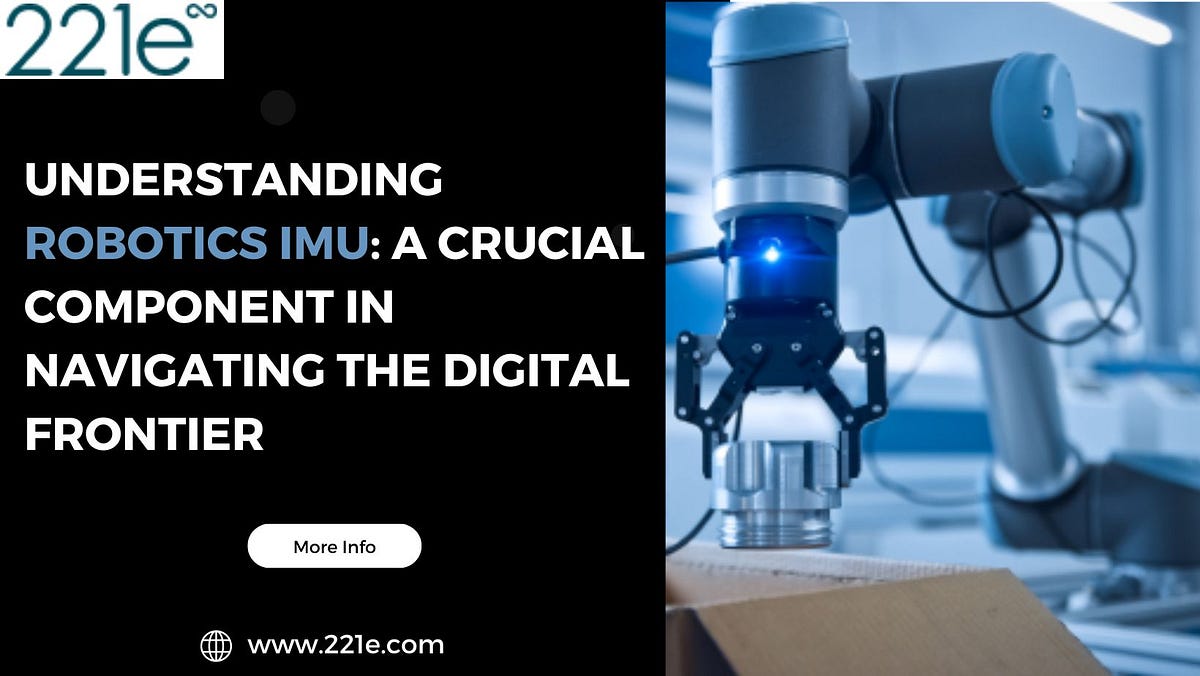In recent years, the field of robotics has witnessed significant advancements, with robots becoming increasingly sophisticated and accurate in their movements. One crucial component that has contributed to this improvement is the Inertial Measurement Unit (IMU). An IMU is a device that measures the acceleration, roll, pitch, and yaw of a robot, providing it with a sense of balance and orientation. In this article, we will delve into the world of robot IMU, exploring its principles, applications, and benefits.

What is an IMU?
An Inertial Measurement Unit (IMU) is a self-contained system that measures the acceleration, angular velocity, and orientation of a robot. It typically consists of a combination of sensors, including accelerometers, gyroscopes, and sometimes magnetometers. These sensors work together to provide a comprehensive picture of the robot’s movement and orientation in three-dimensional space.
How Does an IMU Work?
The IMU uses a combination of sensors to measure the robot’s movement and orientation. The accelerometers measure the acceleration of the robot in all three axes (x, y, and z), while the gyroscopes measure the angular velocity (rotation) of the robot around each axis. The magnetometer, if present, measures the magnetic field around the robot, providing additional data on its orientation.
The IMU’s sensors transmit their data to a central processing unit, which uses complex algorithms to fuse the data and calculate the robot’s orientation, position, and velocity. This information is then used to control the robot’s movements, ensuring it remains stable and balanced.
Applications of Robot IMU
Robot IMUs have a wide range of applications in various fields, including:
- Robotics and Automation: IMUs are used in robotic arms, autonomous vehicles, and other robots to provide precise control and navigation.
- Gaming and Simulation: IMUs are used in gaming controllers and simulation systems to provide immersive and realistic experiences.
- Aerospace and Defense: IMUs are used in aircraft, missiles, and other defense systems to provide accurate navigation and control.
- Industrial Automation: IMUs are used in industrial robots to improve their accuracy and efficiency.
- Medical Robotics: IMUs are used in medical robots to provide precise control and navigation during surgical procedures.
Benefits of Robot IMU
The use of IMUs in robots has numerous benefits, including:
- Improved Accuracy: IMUs provide accurate measurements of the robot’s movement and orientation, allowing for precise control and navigation.
- Increased Stability: IMUs help robots maintain their balance and stability, even in challenging environments.
- Enhanced Safety: IMUs enable robots to detect and respond to changes in their environment, reducing the risk of accidents and injuries.
- Increased Efficiency: IMUs enable robots to optimize their movements and actions, leading to increased efficiency and productivity.
- Reduced Maintenance: IMUs can help reduce the need for maintenance and repair by providing real-time monitoring and diagnostic data.
Challenges and Limitations of Robot IMU
While IMUs have revolutionized the field of robotics, there are still challenges and limitations to be addressed, including:
- Sensor Noise and Drift: IMU sensors can be affected by noise and drift, which can impact their accuracy and reliability.
- Complexity and Cost: IMUs can be complex and expensive, making them inaccessible to some developers and manufacturers.
- Integration and Calibration: IMUs require careful integration and calibration to ensure accurate and reliable performance.
- Environmental Factors: IMUs can be affected by environmental factors such as temperature, humidity, and magnetic fields.
Future Developments and Trends
The field of robot IMU is rapidly evolving, with several future developments and trends on the horizon, including:
- Advances in Sensor Technology: Improvements in sensor technology will lead to more accurate and reliable IMUs.
- Increased Use of Artificial Intelligence: AI will play a greater role in IMU data processing and analysis, enabling more sophisticated and adaptive control systems.
- Growing Demand for Autonomous Systems: The increasing demand for autonomous systems will drive the development of more advanced and sophisticated IMUs.
- Improved Integration and Calibration: Advances in integration and calibration techniques will simplify the process of implementing IMUs in robots.
FAQ
- What is the difference between an IMU and an accelerometer?
An IMU measures acceleration, roll, pitch, and yaw, while an accelerometer only measures acceleration. - Can IMUs be used in high-vibration environments?
Yes, IMUs can be used in high-vibration environments, but they may require additional filtering and processing to maintain accuracy. - How do IMUs handle magnetic interference?
IMUs can use magnetometers to detect and compensate for magnetic interference, ensuring accurate measurements. - Can IMUs be used in GPS-denied environments?
Yes, IMUs can be used in GPS-denied environments, providing accurate navigation and control even when GPS signals are unavailable. - What is the typical cost of an IMU?
The cost of an IMU can vary widely, depending on the specific application, sensor quality, and features, ranging from a few hundred to several thousand dollars.
Conclusion
In conclusion, robot IMUs have revolutionized the field of robotics, providing accurate and reliable measurements of movement and orientation. With their wide range of applications, benefits, and future developments, IMUs are set to play an increasingly important role in the development of autonomous systems. While challenges and limitations remain, the advantages of IMUs make them an essential component in the pursuit of creating more sophisticated and capable robots. As the technology continues to evolve, we can expect to see even more innovative and exciting applications of IMUs in various fields, from robotics and automation to gaming and simulation.
Closure
Thus, we hope this article has provided valuable insights into Introduction to Robot IMU: Understanding the Technology. We hope you find this article informative and beneficial. See you in our next article!
